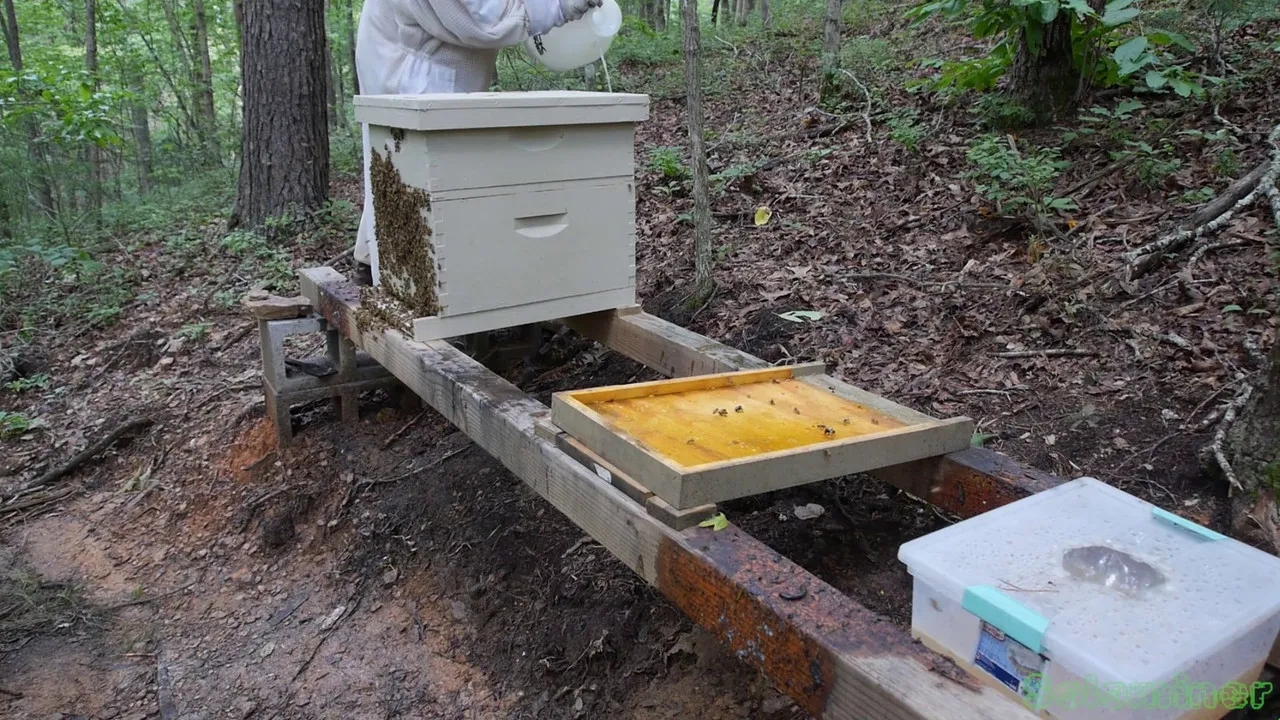My first split was unsuccessful, in hindsight I can see numerous things that happened that may have caused this. But I guess that's part of the learning experience. So now I must clean out the comb and honey left in the weak hive and hope to do another split from the strong hive again. But next time around I have a few things that will be done differently.

I can now see why starting off a split in a nuc (small bee hive) is more appealing. When the hive is small, they cannot protect all of the honey frames. This allows the beetles to move in and lay their larva. I think that is what occurred. So the next split I may need a smaller starter hive than the 8 frame ones I have now.
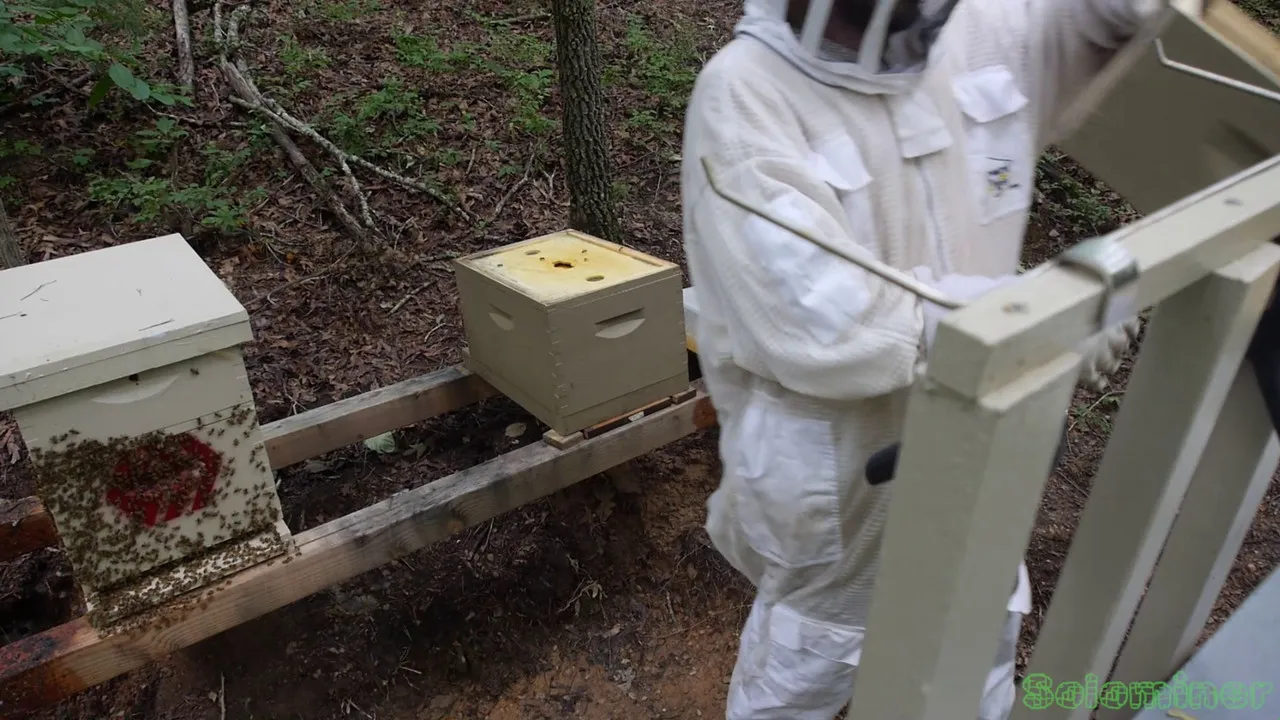
Starting to take apart the weak hive I look for beetles and crush them when I find them.
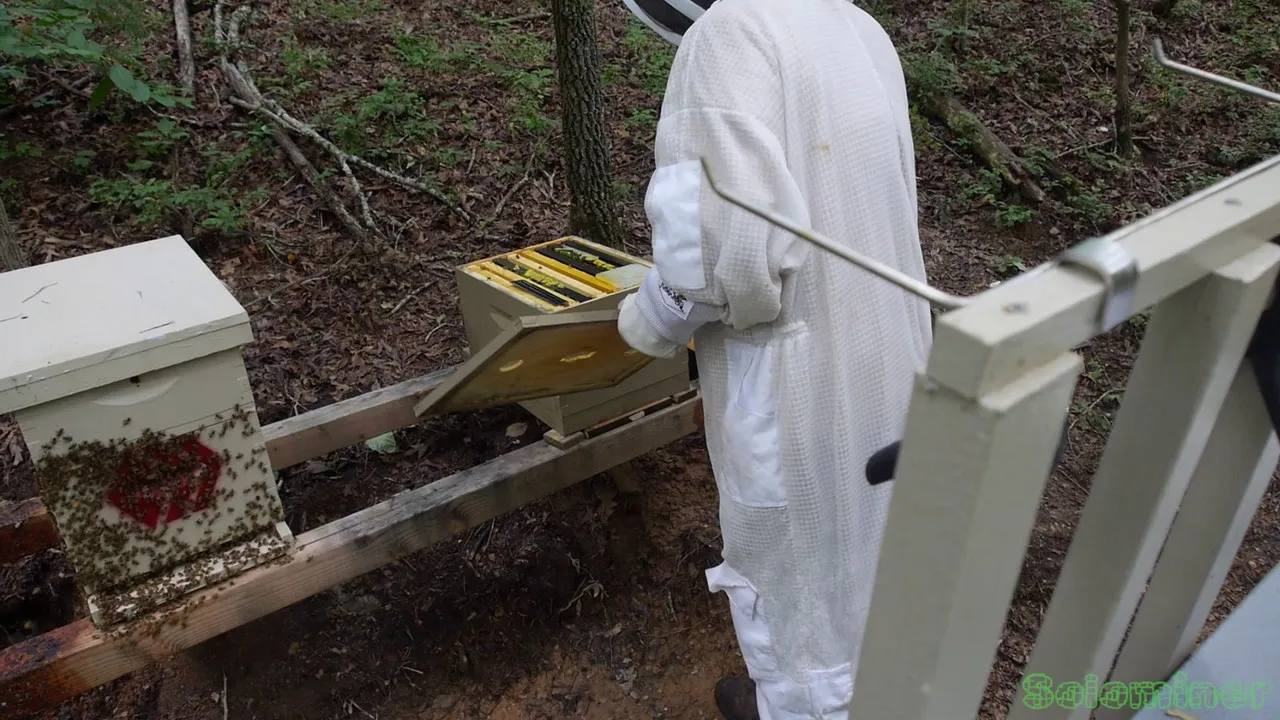
Since leaving after discovery of the larva I put more traps in the weak hive. But they were not very effective since most of the hive has already left. These traps rely on bees herding the beetles into the traps, which only happens with a stronger hive.

Taking out the frames we can see the damage caused by these small hive beetles. And how dark the wax looks when it starts fermenting.
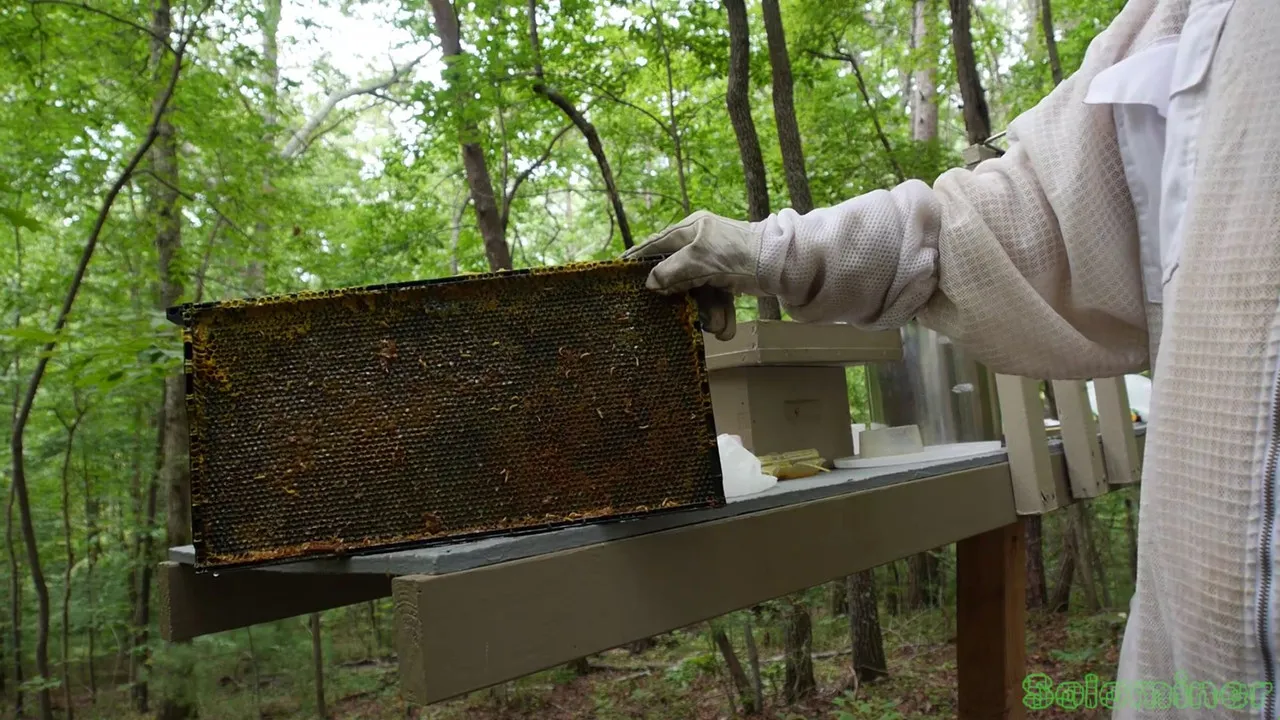
Once I scrape off the wax and honey from the foundation frames we can see the larva crawling around. I will leave these out in the sun to clean up.
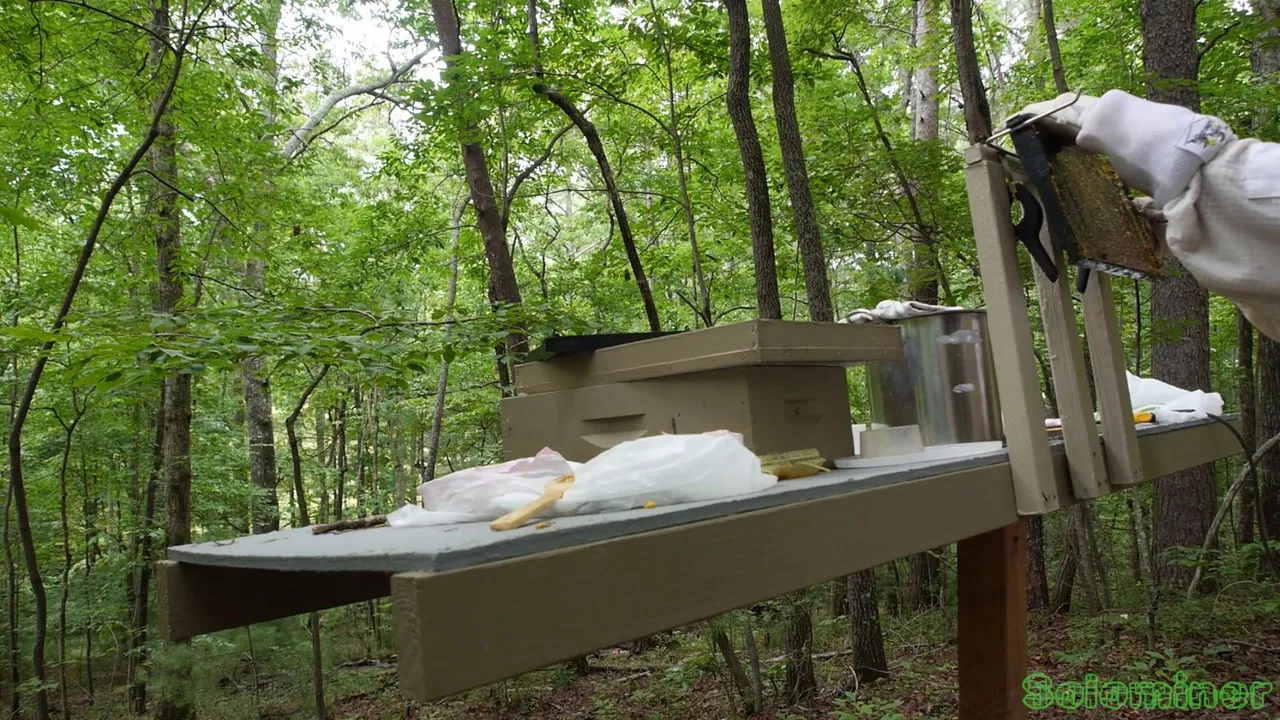
Placing some of the frames on a holder I have setup, but I had too many and some had to be setup on the table. Leaving them there for a few weeks the bugs out in the forest should clean it all up.

I used a wooden stirring spoon to scrape off the wax, now this spoon will only be used for bee stuff. Hah.. I have many old kitchen utensils that are now being used for my bee keeping.
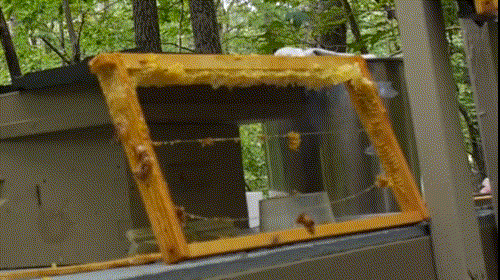
Honey can be seen dripping from the frames that I cleaned out. I leave them out for the forest insects to remove and the strong hive will probably collect some of it as well.

The first mistake was doing a split right after cross comb cleanup. I believe the spilled honey from the weak hive may have attracted robbers and small hive beetles. If I waited 24 or so hours after the cleanup the bees in the strong hive would have fixed most of it making it not so messy.
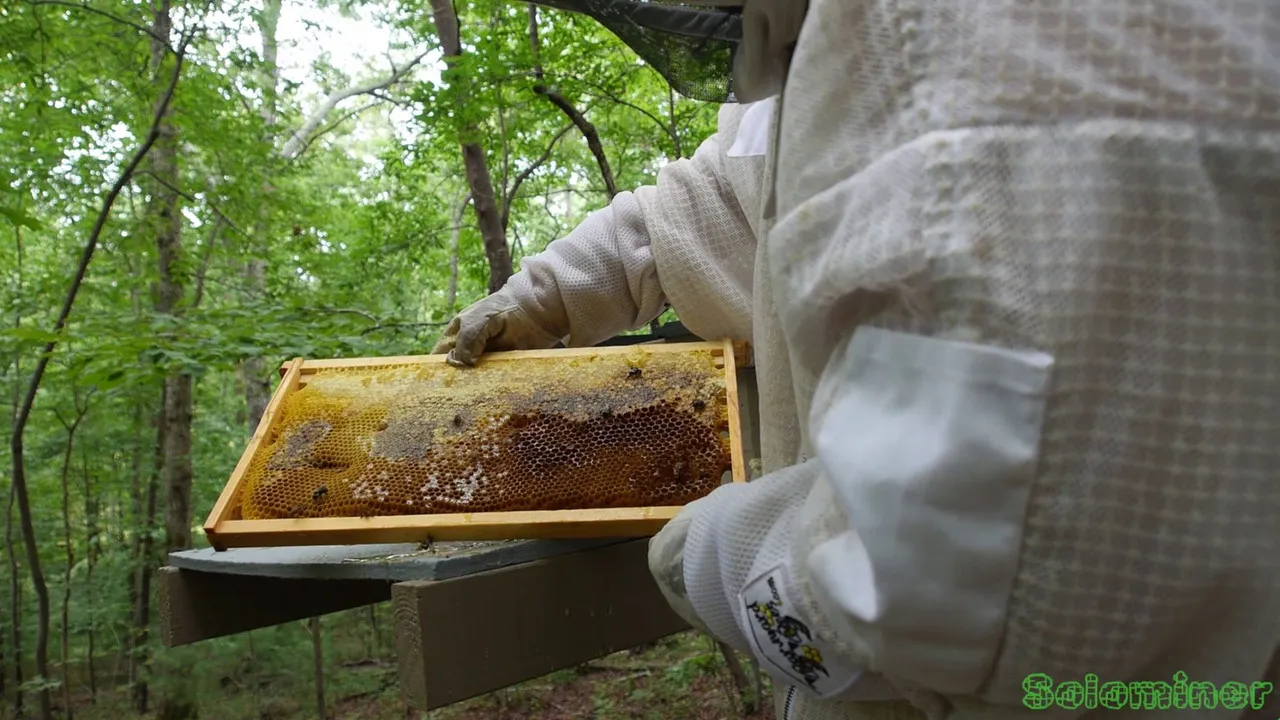
The color of fermenting honey can be seen on this frame, its a darker color and caused by the small hive beetle larvae.
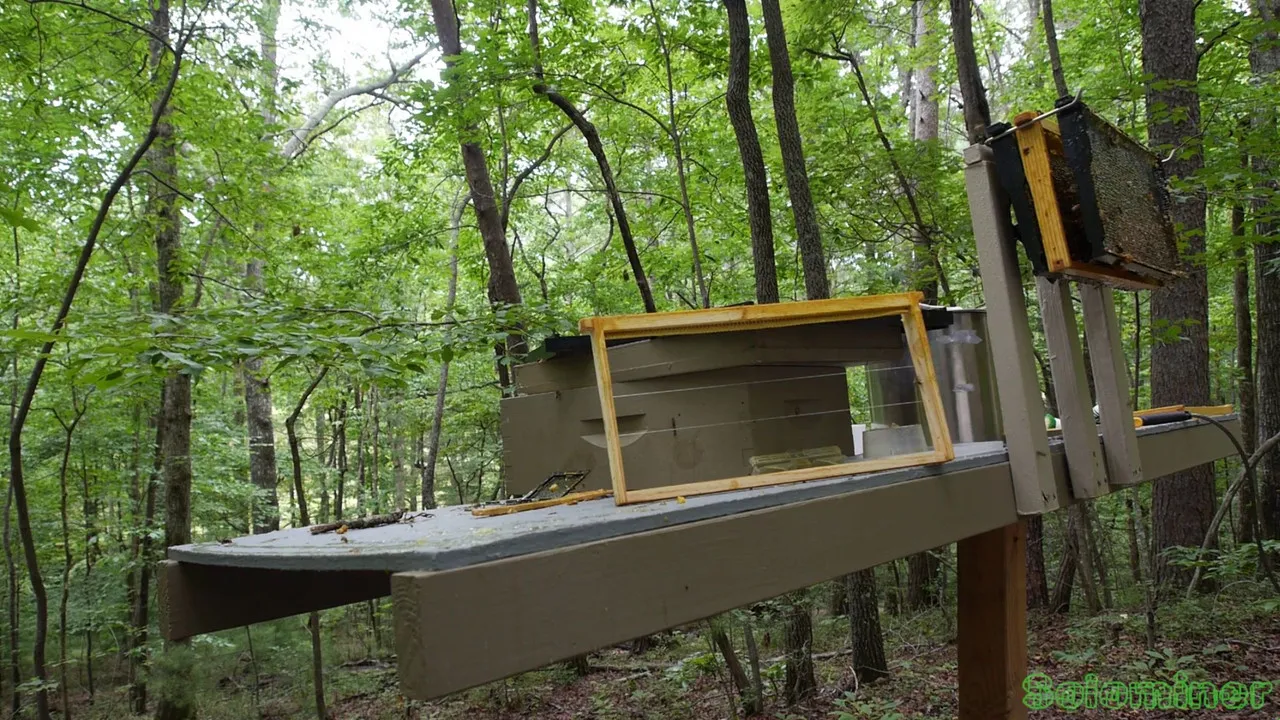
I stack the frames I cleaned up and will leave them out for a few weeks. The small hive beetle larva hate the sunlight so leaving them out will help them disperse. I poured salt and vinegar around below so the larva do not borrow into the ground and complete their lifecycle.
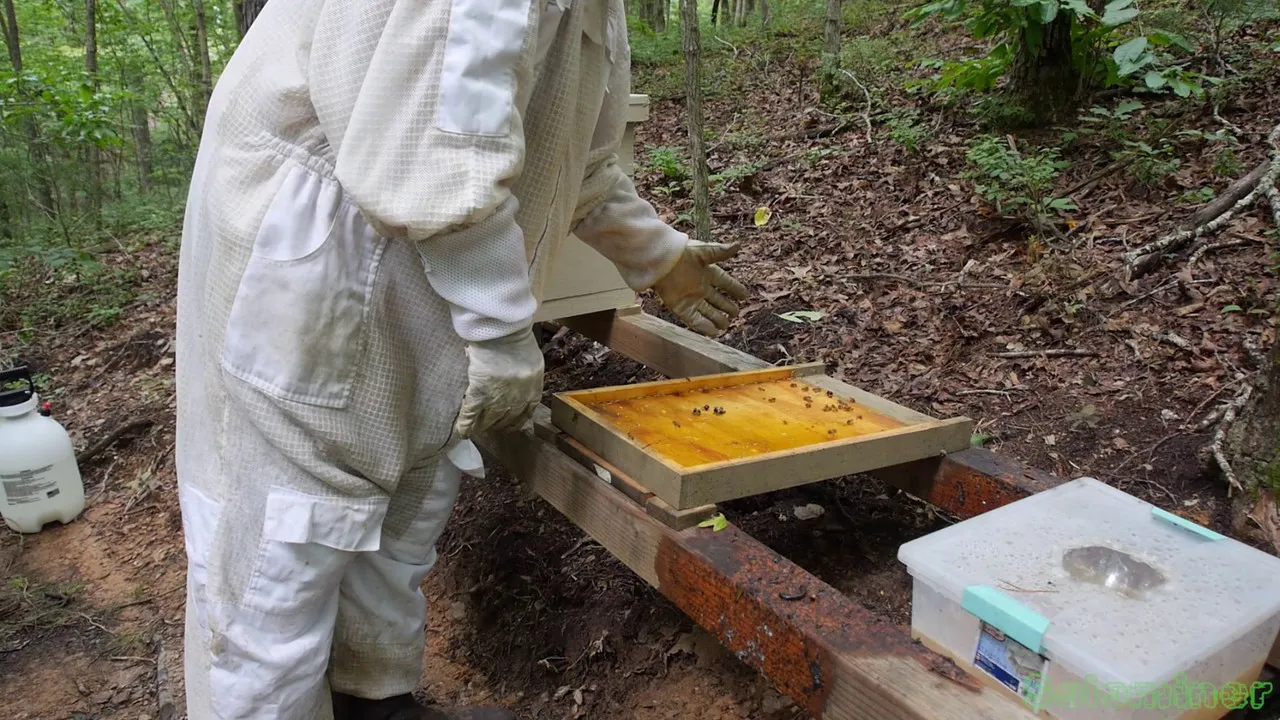
The bottom board is left alone, as the rain and sunlight will help clean it all up. Along with any insects that visit the area they will clean up the fermented honey and such.
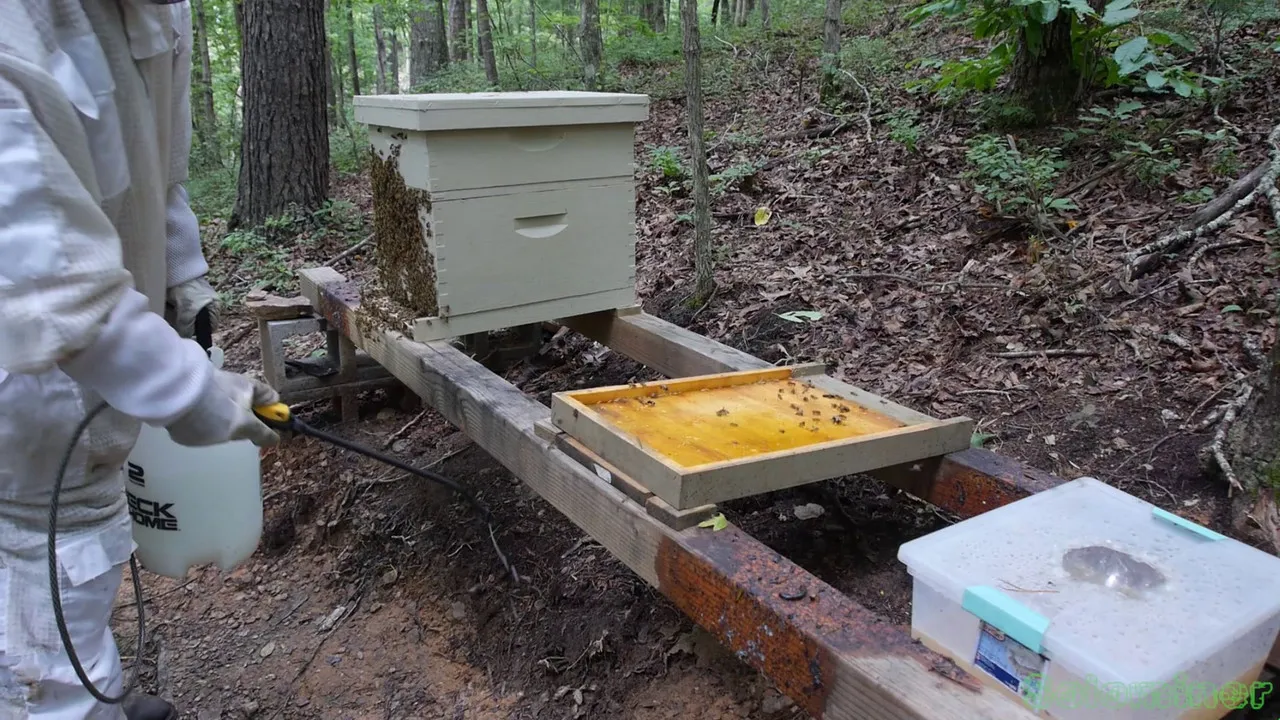
Spraying a salt and vinegar mix around where the weak hive was. This will stop the small hive beetle larva from coming back even stronger.

My sprayer gets clogged, so I have to resort to pouring it out manually. Not a big deal, just have to go slow so I dont get too hot in my suit. Being well into the 80s and 90s I must pace myself working on the hives. Sometimes having to stop early so I do not get too fatigued. It was alot easier during the spring, but now the summer is around lots of sweat is involved.
